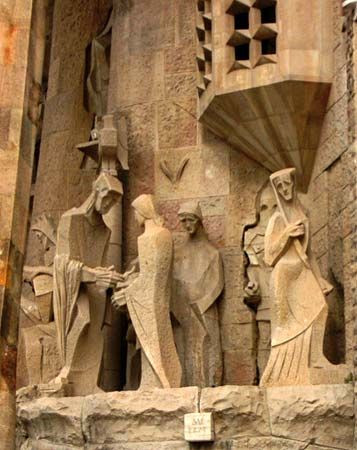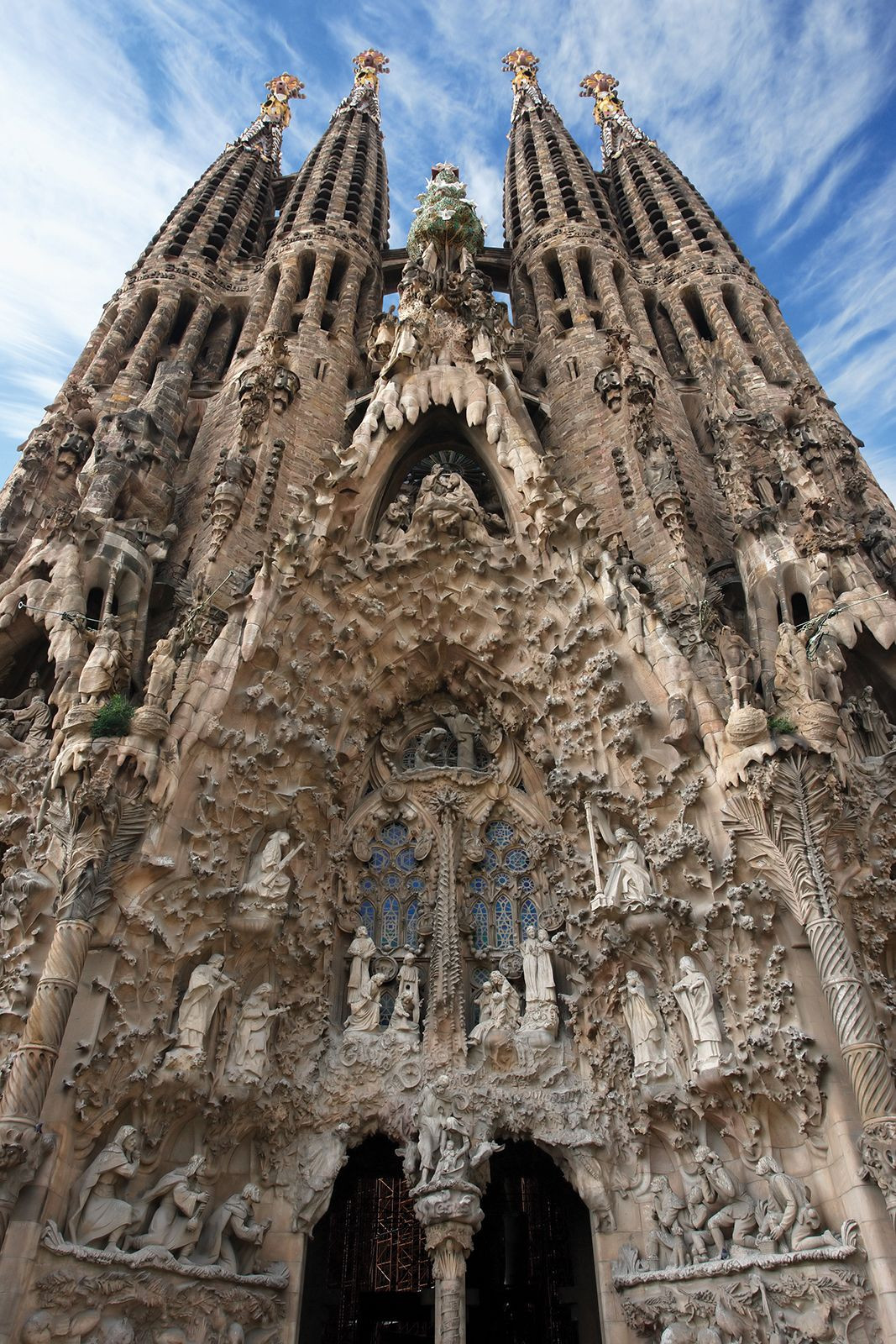Barcelona, Spain, is a city celebrated for its vibrant culture, stunning architecture, and historical landmarks. Among these, the Sacred Family, or Sagrada Família, stands as a testament to architectural genius and unwavering faith. Designed by the visionary Antoni Gaudí, this Roman Catholic basilica is not just a church; it’s an iconic symbol of Barcelona and a captivating journey through art, religion, and history. Begun in 1882 and still ongoing, the Sacred Family is a unique spectacle in the urban landscape, drawing millions of visitors annually to marvel at its intricate details and towering presence.
Image: The iconic Sacred Family basilica in Barcelona, Spain, designed by Antoni Gaudí, showcasing its unique architecture and towering spires.
Originally conceived by Francisco de Paula del Villar, the project’s foundation was rooted in fostering Christianity in a progressively secular Barcelona, funded by devout donations. However, it was Antoni Gaudí who, in 1883, transformed the initial Neo-Gothic plans into an unprecedented architectural marvel. Gaudí dedicated his life to this endeavor, evolving the design into a self-supporting structure, eliminating the need for traditional internal bracing or external buttresses. His vision materialized as a symbolically rich forest of helicoidal pillars, hyperboloid vaults, and paraboloid roofs, reimagining the concept of a 20th-century cathedral. The Sacred Family became Gaudí’s Expressionist canvas to depict the profound mysteries of Christian faith through visual symbolism. His devotion deepened with the project; after 1910, Gaudí immersed himself entirely in its creation, even residing on-site in its workshop.
Beyond his religious commitment, Gaudí was deeply involved in the Renaixensa, a Catalan artistic and political resurgence. This movement aimed to revitalize Catalan culture, long suppressed by the Madrid-centric Spanish government. The Sacred Family transcended its religious purpose, becoming a potent symbol of Catalan identity and the Renaixensa movement in Barcelona.
 Sagrada Família: sculpture of Pontius Pilate
Sagrada Família: sculpture of Pontius Pilate
Image: Detail of the Passion facade of the Sacred Family, Barcelona, featuring a sculpture of Pontius Pilate by Josep Maria Subirachs, illustrating the biblical narrative.
Gaudí’s original designs and models, largely lost during the Spanish Civil War, depicted a colossal basilica capable of hosting 13,000 worshippers. Based on a traditional basilica layout, the Latin cross form is embraced by porticoes on three sides. Each facade tells a biblical story: the Nativity facade to the east celebrates Jesus’ birth, the Passion facade to the west portrays his crucifixion, and the Glory facade at the main entrance illustrates humanity’s path to divine glory. Eighteen towering, spindle-shaped spires reach skyward, each symbolizing biblical figures: twelve for the Apostles, four for the Evangelists, one for the Virgin Mary, and the tallest central spire for Jesus Christ. Each facade is adorned with four bell towers representing Apostles, with substitutions made for Judas, St. John, and St. Matthew with St. Barnabas, St. Matthias, and St. Paul. The six central towers, dedicated to Jesus, Mary, and the Evangelists, act as skylights, illuminating the nave below.
 Sagrada Família: Nativity facade
Sagrada Família: Nativity facade
Image: A striking close-up of the Nativity facade of the Sacred Family in Barcelona, showcasing Antoni Gaudí’s organic architectural style and intricate sculptural details.
Upon Gaudí’s death in 1926, only the Nativity facade, one bell tower, the apse, and the crypt were complete. His disciple, Domènec Sugranyes, continued the ambitious project. Gaudí, aware of the long construction timeline, famously said, “The patron of this project is not in a hurry.” His profound contribution was recognized in 1984 when UNESCO designated the works of Gaudí, including the Nativity facade and the crypt of the Sacred Family, as a World Heritage site. In 2010, despite being unfinished, the church was consecrated as a minor basilica by Pope Benedict XVI, affirming its sacred status.
Image: A construction diagram illustrating the ongoing work at the Sacred Family in Barcelona, highlighting completed sections in white and areas still under construction in brown as of February 2023.
Construction persevered after Gaudí’s passing, with the Nativity facade’s remaining bell towers finished by 1930. The Spanish Civil War caused interruptions and loss of original designs, posing significant challenges. Modern adaptations and reconstructed materials guide the current work, some of which have faced criticism. The Passion facade’s foundation was laid in 1954, and its four bell towers were completed in 1976. The central nave vaulting concluded in 2000, with the roof finalized in 2010. After a temporary halt in early 2020 due to the COVID-19 pandemic, construction resumed later that year. The Tower of the Virgin Mary was inaugurated in December 2021, reaching 138 meters and adorned with an illuminated star. In 2022, the towers of Evangelists St. Mark and St. Luke were completed, standing at 135 meters. The projected completion for all towers and most of the church structure is 2026, marking the centennial of Gaudí’s death. Upon completion, the Sacred Family is anticipated to be the world’s tallest church building, a lasting monument to faith, art, and the enduring spirit of Barcelona, Spain.

